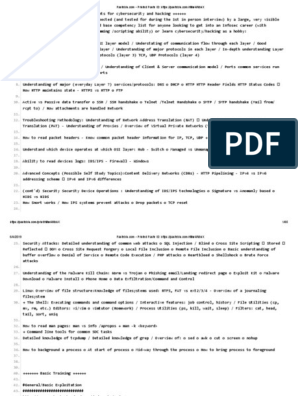0% found this document useful (0 votes)
193 views8 pagesComputer Service Technician-CST: Competency Requirements
Uploaded by
shriram1082883Copyright
© © All Rights Reserved
We take content rights seriously. If you suspect this is your content, claim it here.
Available Formats
Download as PDF, TXT or read online on Scribd
0% found this document useful (0 votes)
193 views8 pagesComputer Service Technician-CST: Competency Requirements
Uploaded by
shriram1082883Copyright
© © All Rights Reserved
We take content rights seriously. If you suspect this is your content, claim it here.
Available Formats
Download as PDF, TXT or read online on Scribd
/ 8





























































































